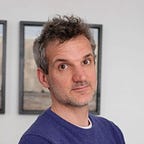David Hume: Laird of the Bundle
The Philosopher’s Philosopher on Scepticism, Science, and Selfhood
Towards the end of his groundbreaking A Treatise of Human Nature (1739) David Hume asks us to imagine the mind of an organism “even more simple than an oyster”. This organism possesses only one kind of perception, such as thirst or hunger. It knows nothing else.
Would that simple organism, with its one sole perception, have any notion of self? No? If that’s true of this simple organism then surely, Hume reasoned, adding more perceptions could never give you access to that self.
Those perceptions — as sensations and thoughts — would simply pile on top of each other and give us no insight into personal identity even if, in aggregate, they gave us the feeling of personal identity.
Hume wrote,
“For my part, when I enter most intimately into what I call myself, I always stumble on some particular perception or other, of heat or cold, light or shade, love or hatred, pain or pleasure. I never can catch myself at any time without a perception, and never can observe any thing but the perception.”
So the human being is trapped in the mind, unable to think beyond thoughts and never reaching anything that cannot be broken down into smaller units of thought. The very…
